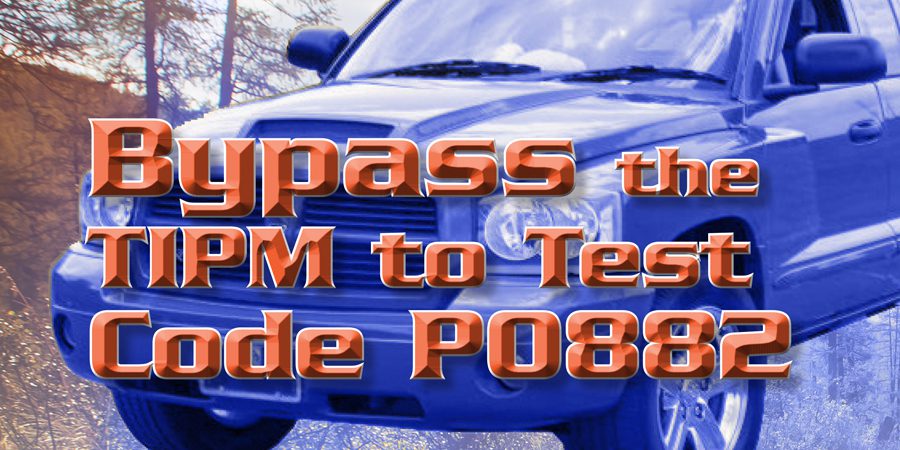Sensor technology is changing rapidly. Technicians usually set up expectations about what the sensor waveform will look like when they connect their scope and pull up the waveform. This expectation changes with smart sensors. Let’s investigate how smart sensors work and how they change our diagnostic path. The sensor we have chosen to feature in today’s article is the throttle position sensor (TPS). The TPS sensor has been used since the beginning of fuel injection, and its main function is to report the throttle blade position. The engine control module (ECM) needs this information to determine how quickly the throttle is depressed or released and the exact opening in degrees. Faulty sensors can cause engine drivability issues like surging and hesitations. It can also cause transmission shifting issues along with torque converter lock-up problems.
Before we get into smart sensors, let’s look back at the TPS sensor design. Early fuel injection models used a cable to actuate the throttle plate. The ECM could operate the engine without the TPS sensor input in case of failure. The ECM would use the MAP or MAF sensor input as a substitute. The original TPS sensors were three-wire potentiometer-type sensors. The three wires consist of a five-volt reference, signal wire, and ground. The signal wire changed voltage with throttle blade angle changes. This design used a wiper that contacted a resistor that would vary the voltage depending on the throttle angle. The sensor signal could be tested with a lab scope (Figure 1). This design suffered from wiper-resistor wear that caused dropouts in the signal.
 Later, model vehicles deleted the throttle cable and installed a throttle body motor to operate the throttle plates. Units equipped with throttle motors placed more authority on the TPS input due to the ECM controlling the throttle blade angle with a throttle motor. The change in design made it more difficult for the ECM to substitute the TPS sensor signal. Since more authority was placed on the TPS, the internals were redesigned, and a second sensor was added. The dual TPS sensors switched to a Hall Effect type sensor. These sensors included two five-volt references, two signal wires, and two grounds. The Hall Effect type sensors eliminated a wiper physically touching the variable resistor, so it did not experience the wear that previous sensor designs incurred. The Hall Effect sensors created two signal voltages that typically travel in opposite directions. For example, we will use a Ford TPS (Figure 2); sensor one starts at 4.3 volts and travels downward as the throttle angle increases. Sensor two starts at .82 volts and travels upwards as the throttle angle increases. It is imperative that the two voltage levels retain the same voltage offset throughout the entire range. One problem this design had was that outside interference may cause noise on the signals, affecting the voltage offset between the sensors and causing drivability issues and codes.
Later, model vehicles deleted the throttle cable and installed a throttle body motor to operate the throttle plates. Units equipped with throttle motors placed more authority on the TPS input due to the ECM controlling the throttle blade angle with a throttle motor. The change in design made it more difficult for the ECM to substitute the TPS sensor signal. Since more authority was placed on the TPS, the internals were redesigned, and a second sensor was added. The dual TPS sensors switched to a Hall Effect type sensor. These sensors included two five-volt references, two signal wires, and two grounds. The Hall Effect type sensors eliminated a wiper physically touching the variable resistor, so it did not experience the wear that previous sensor designs incurred. The Hall Effect sensors created two signal voltages that typically travel in opposite directions. For example, we will use a Ford TPS (Figure 2); sensor one starts at 4.3 volts and travels downward as the throttle angle increases. Sensor two starts at .82 volts and travels upwards as the throttle angle increases. It is imperative that the two voltage levels retain the same voltage offset throughout the entire range. One problem this design had was that outside interference may cause noise on the signals, affecting the voltage offset between the sensors and causing drivability issues and codes.
Smart TPS sensors do not report dual analog five-volt signals that go to zero back to the ECM. Smart sensors intercept the two TPS signals from the sensor and process the two signals in a microsecond. The micro sends the two TPS readings to the ECM over the single-edge nibble transmission line (SENT). The ECM receives a serial data message with the TPS readings embedded within the message.  SENT is a one-way point-to-point communication signal that transports signal values from a sensor to a module. SENT communication is a unidirectional signal, meaning the smart sensor only sends and does not receive information. SENT is a low-cost alternative to CAN & LIN networks. SENT communication follows the SAE J2716 protocol. SENT protocol uses a basic unit of time called a tick. A tick can range from 3-10 microseconds, with 3 microseconds being typical. Each message starts with a synchronization calibration pulse of 56 clock ticks, followed by the four-bit status and communication pulse. The receiver measures the synchronization pulse to resynchronize with the smart sensor between messages. The pulses are measured on the falling edges of the signal. The data pulses follow next, followed by the cycle redundancy check (CRC). The low pulse consists of five or more ticks between the falling edges. The high pulse can vary between falling edges of 12-27 ticks. Data is sent in nibbles; a nibble is four bits, and a byte is eight bits. Sent messages are 32 bits in length. The message is structured into 24 bits of sensor data (6 nibbles) that represent three nibbles for TPS 1 and three nibbles for TPS 2.
SENT is a one-way point-to-point communication signal that transports signal values from a sensor to a module. SENT communication is a unidirectional signal, meaning the smart sensor only sends and does not receive information. SENT is a low-cost alternative to CAN & LIN networks. SENT communication follows the SAE J2716 protocol. SENT protocol uses a basic unit of time called a tick. A tick can range from 3-10 microseconds, with 3 microseconds being typical. Each message starts with a synchronization calibration pulse of 56 clock ticks, followed by the four-bit status and communication pulse. The receiver measures the synchronization pulse to resynchronize with the smart sensor between messages. The pulses are measured on the falling edges of the signal. The data pulses follow next, followed by the cycle redundancy check (CRC). The low pulse consists of five or more ticks between the falling edges. The high pulse can vary between falling edges of 12-27 ticks. Data is sent in nibbles; a nibble is four bits, and a byte is eight bits. Sent messages are 32 bits in length. The message is structured into 24 bits of sensor data (6 nibbles) that represent three nibbles for TPS 1 and three nibbles for TPS 2.
The sent network requires three wires, a five-volt reference, ground, and a unidirectional signal line. The unidirectional line delivers the SENT message. When the signal line voltage drops below .5 volts, logic is low. When the voltage rises above 4.1 volts, this indicates a logic high. Due to the high and low voltage pulse, the signal resists noise more than a CAN bus. Each nibble starts with five logic low ticks and a series of logic high ticks. The SENT waveform integrity should be checked with a lab scope. Check voltage levels and make sure the low pulse drops below .5 volts and the high pulse rises above 4.1 volts (Figure 3).
The next thing that you should check is the synchronization pulse. This pulse should be repeated after each message, and each synchronization pulse should be the same length of time between messages. Place a cursor on the falling edge of the synchronization pulse and another cursor at the end of the pulse, as shown in Figure 4.  The synchronization pulse is 56 clock ticks long if there is no variation in clock frequency. SAE J2716 specifies that there can be up to 20% variation in the transmitter clock frequency, which means the synchronization pulse can vary between 48.8-67.2 clock ticks. The example we are going to use is from a 2024 GMC 2500 HD. The clock ticks average 2.960 microseconds on this SENT waveform. To set up our expectation for the time of the synchronization pulse, we simply multiply 56 X 2.960 = 165.76 microseconds.
The synchronization pulse is 56 clock ticks long if there is no variation in clock frequency. SAE J2716 specifies that there can be up to 20% variation in the transmitter clock frequency, which means the synchronization pulse can vary between 48.8-67.2 clock ticks. The example we are going to use is from a 2024 GMC 2500 HD. The clock ticks average 2.960 microseconds on this SENT waveform. To set up our expectation for the time of the synchronization pulse, we simply multiply 56 X 2.960 = 165.76 microseconds.
Our synchronization pulse measured 165 microseconds, which was what we expected, and that is exactly what the ECM also expected. Does that mean every vehicle will have the same synchronization pulse length? The answer is no because the tick time can vary slightly from 3 microseconds, and the clock frequency can vary.  To illustrate the point, we will change vehicles and use a 2022 GMC Canyon for our next synchronization pulse example. This vehicle will have a much longer synchronization pulse time due to the tick time averaging 3.35 microseconds rather than 2.960 microseconds. Let’s set up our expectations for the synchronization pulse. 56 X 3.35 =187.6 microseconds. We can see in Figure 5 that the pulse measured 187 microseconds, which met our expectations.
To illustrate the point, we will change vehicles and use a 2022 GMC Canyon for our next synchronization pulse example. This vehicle will have a much longer synchronization pulse time due to the tick time averaging 3.35 microseconds rather than 2.960 microseconds. Let’s set up our expectations for the synchronization pulse. 56 X 3.35 =187.6 microseconds. We can see in Figure 5 that the pulse measured 187 microseconds, which met our expectations.
After the synchronization pulse, the Status pulse follows next, followed by the 6 data pulses. The six data nibbles contain 24 bits, three data nibbles containing 12 bits for TPS 1, and three data nibbles containing 12 bits for TPS 2. At the end of the message a four-bit CRC pulse will finish the message. The CRC checks for errors in the message. Figure 6 is a lab scope waveform of a SENT data string with all the areas labeled.
 When a smart sensor fails to communicate with the control module, a technician may struggle with diagnosis by making all the tick measurements using lab scope and time cursors. It may be easier to diagnose the SENT message with a serial decoder. It just so happens PICO scopes have a serial decoder built in. Tap the More button and serial decoding tab to initiate the serial decoder. A screen with a list of networks that the PICO scope can decode will appear. Select SENT Fast tab and decode the message. The serial decoder will list the start time and end time of each message, calibration pulse time, and clock tick time to decode the data stream into Hex, decimal, or binary. I prefer to decode it into binary. The calibration pulse must remain a constant time, the clock tick time must not vary much, and the data nibbles must be consistent with binary numbers. All data packets that pass will be in black, and any packets that fail will be in red. Figure 7 shows an example of a decoded SENT communication waveform taken with a PICO scope. All decoded fields are black, and the message has no CRC errors.
When a smart sensor fails to communicate with the control module, a technician may struggle with diagnosis by making all the tick measurements using lab scope and time cursors. It may be easier to diagnose the SENT message with a serial decoder. It just so happens PICO scopes have a serial decoder built in. Tap the More button and serial decoding tab to initiate the serial decoder. A screen with a list of networks that the PICO scope can decode will appear. Select SENT Fast tab and decode the message. The serial decoder will list the start time and end time of each message, calibration pulse time, and clock tick time to decode the data stream into Hex, decimal, or binary. I prefer to decode it into binary. The calibration pulse must remain a constant time, the clock tick time must not vary much, and the data nibbles must be consistent with binary numbers. All data packets that pass will be in black, and any packets that fail will be in red. Figure 7 shows an example of a decoded SENT communication waveform taken with a PICO scope. All decoded fields are black, and the message has no CRC errors.
The next time you need to test a TPS signal on a late-model vehicle, realize it may be a smart sensor. The TPS sensor is not the only place you will find smart sensors; they are also used to measure temperature and pressure. They may also be used for steering angles and steering torque.


















